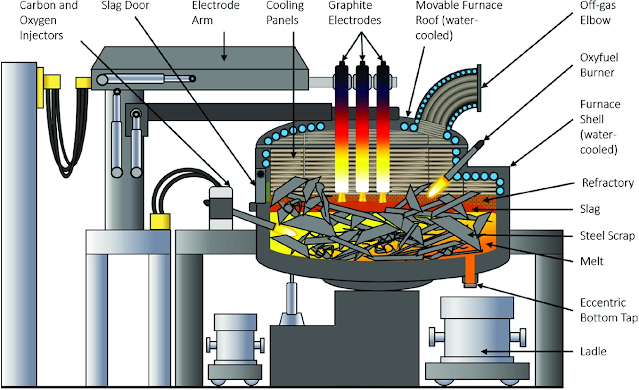Breakthrough in Green and Low-Carbon Steelmaking Technology
The long-held industry perception that “long-process steelmaking must be high-carbon” is gradually being overturned. Recently, Wuhan Iron and Steel Co., Ltd. (hereinafter referred to as “WISCO”) successfully produced three heats of steel with a scrap ratio exceeding 50% at its steelmaking plant. This achievement marks a significant breakthrough in green and low-carbon steelmaking technology for WISCO and represents a critical step forward for the steel industry in achieving China’s dual-carbon (carbon peaking and carbon neutrality) goals.
The scrap ratio refers to the proportion of scrap steel input relative to the total metallic charge, which includes both molten iron and scrap steel. Increasing the scrap ratio is a key measure for reducing the carbon content of steel products. Data show that in long-process steelmaking, for every 10% increase in scrap ratio, carbon dioxide emissions per ton of steel are reduced by approximately 6%.
This is not an isolated case. In February this year, Hunan Valin Lianyuan Iron & Steel Co., Ltd. (hereinafter “Hunan Lianyuan Steel”) successfully rolled out cold-rolled hot-formed steel produced using an ultra-high recycled material process, with scrap content reaching 60%. Compared with conventional products, CO₂ emissions were reduced by 43%. In March, Shougang Jingtang United Iron & Steel Co., Ltd. (hereinafter “Shougang Jingtang”) successfully conducted nine consecutive heats in a single converter process with a scrap ratio exceeding 55%, and currently has the capability for stable mass production with scrap ratios above 50%.
“The breakthroughs in scrap ratio achieved by multiple steel companies indicate that the industry’s low-carbon transformation is moving from technical demonstration to large-scale application,” said Wang Guoqing, Director of the Lange Steel Research Center, in an interview with Securities Daily. Compared with leading enterprises, the industry’s average level still has significant room for improvement. Currently, the comprehensive scrap ratio in the steel industry is around 20%. In independent electric arc furnaces using scrap as the sole raw material, the scrap ratio can reach approximately 95%, whereas long-process (blast furnace–converter) steelmakers average less than 15%. For long-process steel plants, there remains substantial potential to increase the scrap ratio.”
The achievement of this key indicator is underpinned by continuous research into core technologies such as converter temperature control and composition stability. WISCO adopted a “blast furnace + steelmaking” multi-point scrap addition method. Without adding scrap to the blast furnace, the company achieved a targeted scrap ratio in the steelmaking stage through scientific planning of scrap allocation and quantification of control parameters at each stage. Shougang Jingtang relied on the “Three Desulfurization Processes” and the “Three-Step Reheating” method to ensure the optimal timing of scrap melting, overcoming stability challenges in continuous production of high-end steel grades. Hunan Lianyuan Steel developed a multi-stage coordinated scrap addition system, combined with preheating, rapid reheating, and process integration, forming a green and efficient large-scale production system for high-scrap-ratio converter steel. They established a comprehensive quality assurance system for high-scrap-ratio steel and successfully produced cold-rolled hot-formed steel with a 60% scrap ratio.
Currently, high-scrap-ratio technology has been applied to multiple high-end steel products, including automotive sheet, tinplate, and home appliance sheet. This demonstrates that the technology not only achieves carbon reduction goals but also meets the strict quality requirements of precision steel applications.
“The market acceptance of high-scrap-ratio technology is primarily due to its significant advantages in three dimensions: environmental protection, raw material efficiency, and product quality,” Wang Guoqing noted.
In addition to conventional high-scrap-ratio processes, Baoshan Iron & Steel Co., Ltd. has developed a full-scrap electric arc furnace steelmaking process capable of reducing carbon emissions by 60% across the entire production cycle. Hebei Iron & Steel Group Co., Ltd. is advancing hydrogen-based direct reduced iron combined with scrap steel refining toward near-zero carbon emissions.
“Looking ahead, before ultimate low-carbon technologies such as hydrogen metallurgy are fully matured, maximizing the use of scrap steel will be the most realistic and effective path for the steel industry to achieve green and low-carbon development,” said Wang Xinjiang, Vice President and Secretary General of the Chinese Society for Metals.
Source: Securities Daily




.jpg)







没有评论:
发表评论